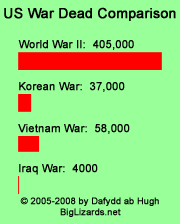Der Krapp
Blood Soda ~ Installment 15
The thing about Herschell Gordon Lewis is that you can't say anything negative about his movies that hasn’t already been said by himself. Here is a guy who gives a new meaning to candor. When informed that French critics considered his films worthy of further study, his reply was, “Well, they also say that about cancer.” Possessing a degree in English, he evaluated his first gore opus by drawing upon his academic background as follows: “Blood Feast (1963)I’ve often referred to as a Walt Whitman Poem -- it’s no good, but it’s the first of its type.” Find a critic who can top that!
Lewis does not sing the body electric, but rather sings of the body dismembered. The titles of his movies are masterpieces of honesty in advertising: the aforementioned Blood Feast, followed by Two Thousand Maniacs! (1964), Color Me Blood Red (1965), the Gruesome Twosome (1967), A Taste of Blood (1967), Something Weird (1967) (which may not belong to blood films, as the scenes of violence are uncharacteristically inept), and the Wizard of Gore (1970). These pictures should not properly be called horror or terror films. “Gore films’ would be the best description, and in fact the most recent addition is The Gore Gore Girls (1972).
No doubt the question will be raised: why honor HGL? One answer is that he is a true independent film maker, who has gone where the majors do not care to follow -- although there is no denying that there is a much greater level of violence in movies in movies today than ever before. Compared to Lewis’ typical budget and resources, Roger Corman started out as an Establishment tycoon. There is no filmmaker in America who deserves the title of independent more completely than Lewis. As he has said of his own breakthroughs: “The only film that an independent can make and survive with is a film that the major producers cannot or will not make.”
It may come as a surprise to learn that only a minority of the Lewis films belongs to the gore genre, although these are the pictures that made his fame. Most would fall into the category of sexploitation films, or what a more innocent period knew as the “nudies.” Perhaps the primary contribution of Lewis to the cinema is that he brought the “acting” endemic to hard-core pornography before a mass audience with his anti-sexual, slice-and-dice films. By this I mean that his gore movies -- his most widely viewed product -- have acting on the level of the cheapest pornography, a kind of performance rarely witnessed by the general movie going public. Atlanta columnist and character assassin David T. Lindsay has this to say on the subject: “In Herschell Gordon Lewis movies, the actors do not act or react, but they go into a trance and stay that way until they’re butchered.” The one exception to this is Two Thousand Maniacs!, t he best-produced of his pictures, and one that, by some accident, has credible moments of acting.
I first became aware of Lewis when I attended a Florida drive-in with a friend in the early seventies. We were going to a quadruple horror bill, a lost treasure in this age of multiplex theaters in shopping malls. There were three Hammer films, and one Lewis: The Wizard of Gore. We told ourselves that we were sitting through Wizard so that we could see a Chris Lee movie afterwards; but to be honest, there is a morbid fascination at times like this. The very worst part was not the mad stage magician pulling out a girl’s eyeball and popping it between his fingers, or sawing a woman in half the messy way, or using a pile-driver on another woman's torso, or chopping out an assortment of tongues. No, the worst part was that the drive in concession stand was having a special on pizza.
My friend and I looked out the window of our car at a line of bleary-eyed and pockmarked young men, wandering zombie-like from the concession stand with dripping red pizza in their hands. We took a good look and then, without a word exchanged between us, we each rolled up the windows even thought it was a warm, humid night.
In a way, the Lewis film had set the hellish context for the drive-in, rather than the other way around. And yet his movies would never have come into existence were it not for the drive-in markets. Surrounded by the shuffling pizza eaters, I remembered a passage from an H.P. Lovecraft story. In “The Horror at Red Hook,” he writes of how modern people can, under the right conditions, "tend uncannily to repeat the darkest instinctive patterns of primitive half-ape savagery in their daily life and ritual observances" (emphasis added). HGL films are repulsive in exactly the same manner as De Sade: they strip away civilization without offering a sly veneer by which we may excuse ourselves. The glossy movies of Brian De Palma are every bit as infused with sadistic contemplation of a woman’s death, and every bit as repetitious. Harlan Ellison has been telling us this for years. The trouble is that De Palma’s films are watchable in a fashion that the Lewis pictures are not, because the Lewis pictures don’t lie!
Besides being a talented businessman and abominable artist, what is the legacy of Herschell Gordon Lewis? He is the man who taught us things we didn’t want to know. Of Blood Feast, the production that started it all back in 1963, he observed: “Sophisticated people can’t stand to look at this picture.” And yet, on a rainy night at the Bel Air Drive-in Theatre in Peoria, the movie sold out. Rarely has an artist in our time understood the nature of his work more completely.
© 1980 by Brad Linaweaver

